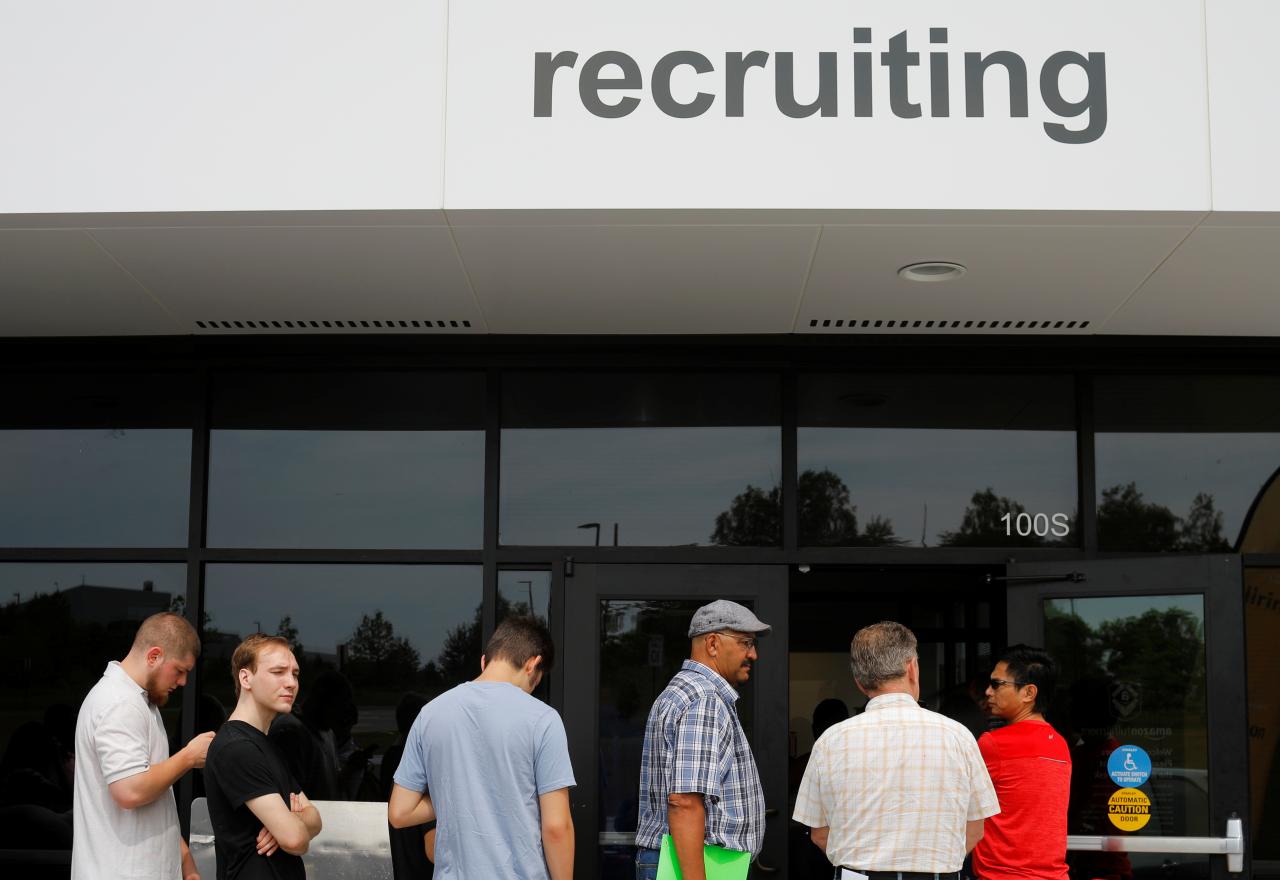 U.S. employers likely maintained a strong pace of hiring in July while raising wages for workers, signs of labor market tightness that could clear the way for the Federal Reserve to announce next month a plan to start shrinking its massive bond portfolio.
U.S. employers likely maintained a strong pace of hiring in July while raising wages for workers, signs of labor market tightness that could clear the way for the Federal Reserve to announce next month a plan to start shrinking its massive bond portfolio.
According to a Reuters survey of economists, the Labor Department’s closely watched employment report on Friday will probably show that non-farm payrolls increased by 183,000 jobs last month after surging 222,000 in June.
Average hourly earnings are forecast to have risen 0.3 percent after gaining 0.2 percent in June. That would be the biggest increase in five months. But the year-on-year increase in wages will probably slow to 2.4 percent as last year’s sharp rise drops out of the calculation.
Average hourly earnings increased 2.5 percent in the 12 months to June and have been trending lower since surging 2.8 percent in February. Lack of strong wage growth is surprising given that the economy is near full employment.
“This will be another encouraging labor market report for the Fed in their anticipated plans for gradual monetary policy tightening into the second half of the year,” said Sam Bullard, a senior economist at Wells Fargo Securities in Charlotte, North Carolina.
Economists expect the Fed will announce a plan to start reducing its $4.5 trillion portfolio of Treasury bonds and mortgage-backed securities in September.
Sluggish wage growth and the accompanying benign inflation, however, suggest the U.S. central bank will delay raising interest rates again until December. The Fed has raised rates twice this year, and its benchmark overnight lending rate now stands in a range of 1 to 1.25 percent.
Wage growth is crucial to sustaining the economic expansion after output increased at a 2.6 percent annual rate in the second quarter, an acceleration from the January-March period’s pedestrian 1.2 percent pace.
The unemployment rate is forecast to have dropped one-tenth of a percentage point to 4.3 percent, a 16-year touched in May. It has dropped four-tenths of a percentage point this year and matches the most recent Fed median forecast for 2017.
Still, some slack remains in the labor market, which economists say is restraining wage growth.
“We still have a lot of potential workers who are working part-time; there is still slack in the labor market which hasn’t been fully worked through,” said Mike Moran, head of economic research, the Americas, at Standard Chartered Bank in New York.
July’s anticipated employment gains would be close to the 180,000 monthly average for the first half of the year. The economy needs to create 75,000 to 100,000 jobs per month to keep up with growth in the working-age population.




